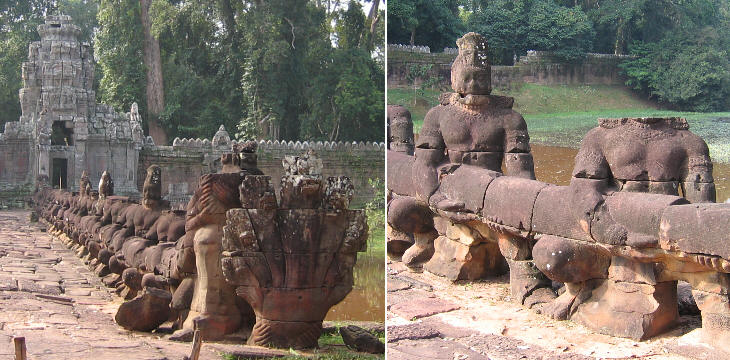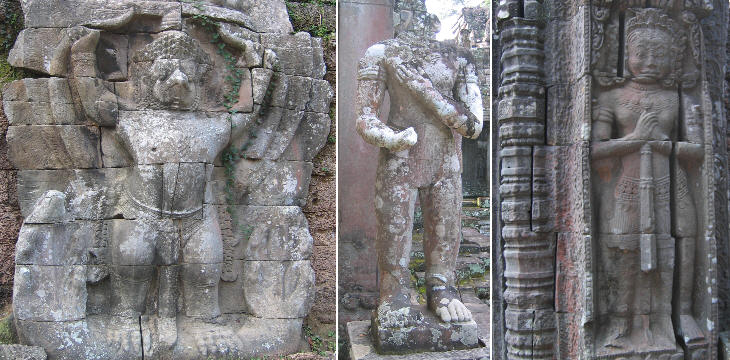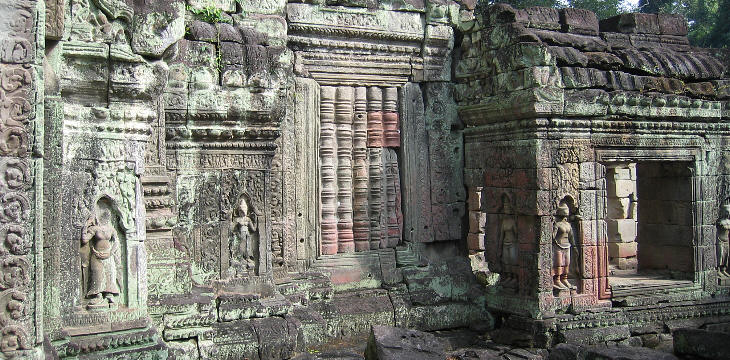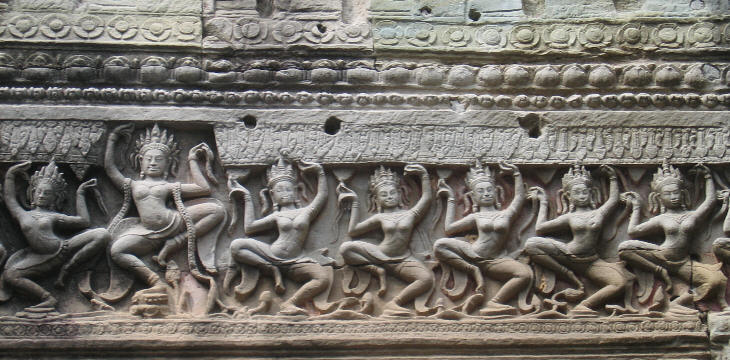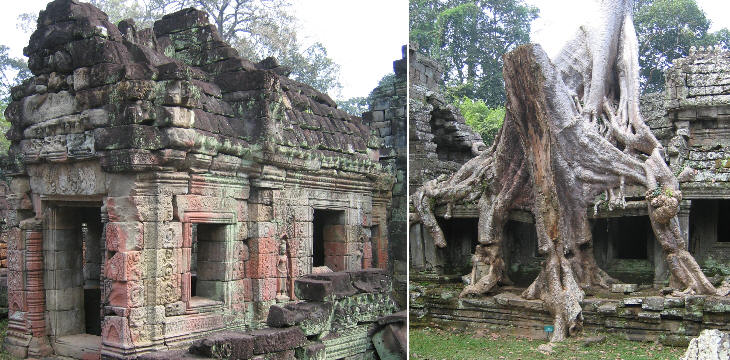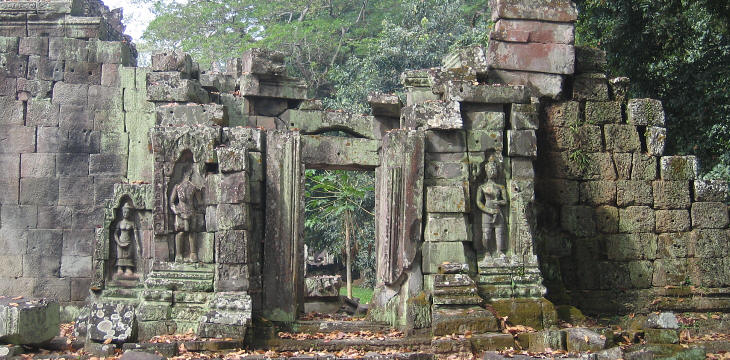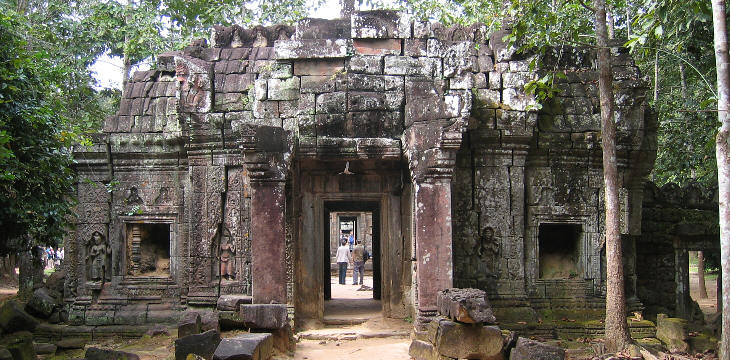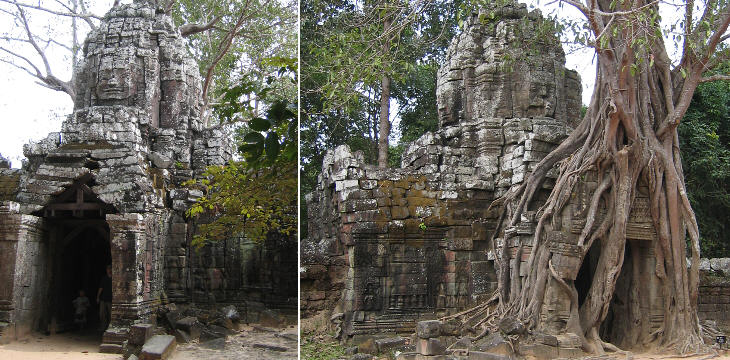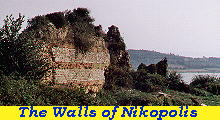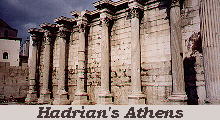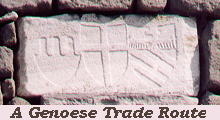  What's New! Detailed Sitemap All images © by Roberto Piperno, owner of the domain. Write to romapip@quipo.it. Text edited by Rosamie Moore. |
 Day two - page one Day two - page one(relief in Banteay Srey) Prah Khan King Jayavarman VII, the founder of Angkor Thom, built Prah Khan as an interim royal residence and sanctuary pending the completion of the new city.
The western entrance is flanked by statues of deva and asura holding a Naga snake: a few years later the southern gate of Angkor Thom was decorated in a similar manner (for the meaning of deva, asura and Naga follow the link).
Prah Khan (Holy Sword) was built on the site where the king defeated the Champa and forced them out of the region: this explains why it was decorated with bas-reliefs portraying Garuda, a bird-like creature symbolizing military prowess, and dvarapalas, deities who were armed with clubs and acted as gate wardens. In addition to bas-reliefs the monuments of Angkor were decorated with statues too: these however have survived in limited numbers and in general have been placed in museums in Cambodia and elsewhere: the statue of a dvarapala shown above is one of the few which is still at its original location.
Some art historians regard the monuments built during the rule of King Jayavarman VII as the Baroque period of Khmer art: the care with which every inch of the buildings was covered by a niche, a blind window or a decorative bas-relief is a characteristic of Mannerism, the style of Italian art which preceded Baroque.
Although the sanctuary of Prah Khan was a Buddhist temple its decoration was mainly based on the traditional Hindu iconography. A small building (today called the Hall of Dancers) is decorated with very lively bas-reliefs portraying a sacred ballet.
An unusual aspect of many buildings of Angkor is their colour: depending on the level of humidity and on the kind of moss which covered them, walls have acquired green and red nuances. Archaeologists had to cut many trees which had grown over the buildings of Angkor, but they chose not to do this in the case of two silk-cotton trees, the roots of which had replaced the columns supporting a portico. Ta Som Ta Som is a relatively small temple dedicated by King Jayavarman VII to his father Dharanindravarman II.
Here you may feel as if you were entering a set of Raiders of the Lost Ark (which was shot at nearby Angkor Vat).
The ruins of Ta Som do not attract large crowds so they are very evocative and retain the atmosphere of a holy site.
A gigantic fig-tree chose to grow over the entrance of a gopura which was decorated with the benign face of Avalokitesvara, (the Lord who looks down with compassion), which was both a Buddhist religious symbol and a portrait of the king. At Ta Som and the other monuments built by King Jayavarman VII this image of Avalokitesvara is almost the only surviving reference to Buddhism. The reason for this is that after the king's death there was a return to Hinduism and most of the Buddha statues were destroyed. Today the prevailing religion (80%) of the Cambodians is Theravada Buddhism (King Jayavarman VII was a follower of Mahayana Buddhism).
 SEE THESE OTHER EXHIBITIONS (for a full list see my detailed list). |
